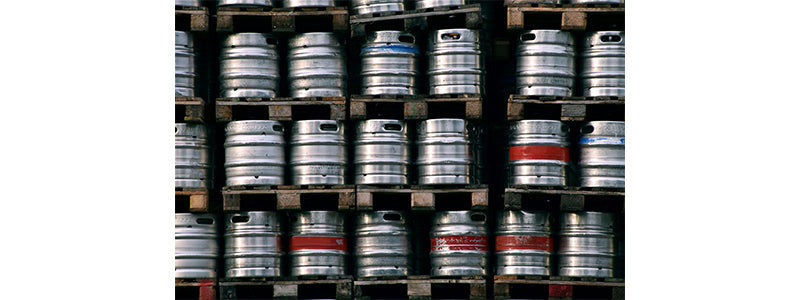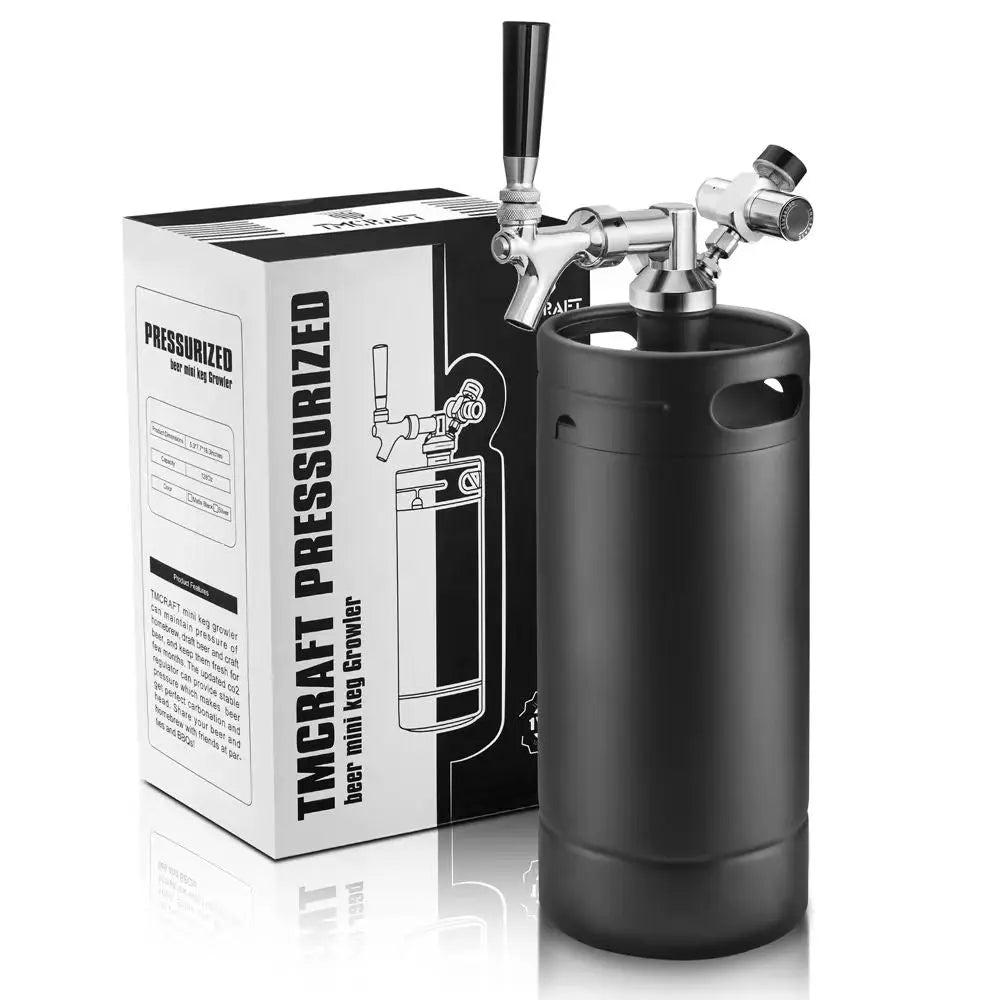
Ball lock keg vs pin lock
Ball Lock Keg vs. Pin Lock Keg: Understanding the Differences
When diving into the world of homebrewing, choosing the right keg is crucial for ensuring the best experience in storing and dispensing your brew. Two of the most common types of kegs used by homebrewers are ball lock kegs and pin lock kegs. While both serve the same fundamental purpose, they have distinct features that cater to different preferences and needs. Let’s explore the key differences between these two keg types and highlight some recommended ball lock kegs.
Key Differences Between Ball Lock and Pin Lock Kegs
1. Connection Mechanism
Ball Lock Kegs:
- Quick Disconnect Fittings: These kegs use a ball-bearing quick disconnect fitting, which is simple to attach and detach. The quick disconnect locks onto the keg’s posts, one for the gas (CO2) and one for the liquid (beer).
- Posts: Both gas and liquid posts are uniform in appearance, typically differentiated by a groove at the top or by a marking on the post.
- Pin-Based Connectors: Pin lock kegs use a pin-and-notch system where the connectors latch onto the keg’s posts. The gas post usually has two pins, while the liquid post has three, making it easy to distinguish between the two.
- Manual Connection: Unlike the quick-release nature of ball lock fittings, pin lock connectors need to be manually twisted onto the posts, which some users find less convenient.
2. Size and Dimensions
Ball Lock Kegs:- Taller and Narrower: Ball lock kegs are generally taller and more slender, making them a better fit in tighter spaces, such as a refrigerator or kegerator with limited horizontal room.
- Common Sizes: The most common size is 5 gallons, though shorter versions are available for those with height restrictions.
- Shorter and Wider: Pin lock kegs are shorter but wider, which can take up more floor space but may be advantageous in setups where height is a limiting factor.
- Standard Size: Like ball lock kegs, pin lock kegs are also typically available in 5-gallon sizes.
3. Availability and Compatibility
Ball Lock Kegs:- Widespread Availability: Ball lock kegs are more commonly found and are often the preferred choice in the homebrewing community. This popularity means that parts, connectors, and accessories are more readily available.
- Versatility: The ball lock system is used by most modern homebrewers, making it easier to swap and share components among brewers.
- Limited Availability: Pin lock kegs were originally designed for Coca-Cola systems and are less commonly available today, leading to fewer options for parts and accessories.
- Dedicated Use: Pin lock systems are more specialized, which may be less convenient for those who want a more universal setup.
4. Ease of Use
Ball Lock Kegs:- User-Friendly: Many homebrewers find ball lock kegs easier to use due to the quick disconnect fittings, which simplify the process of attaching and detaching gas and liquid lines.
- Secure Connections: The pin-and-notch system ensures a secure connection, but it requires more effort to attach and detach lines, which some users find cumbersome.
5. Cost
Ball Lock Kegs:
- Typically More Expensive: Due to their popularity and the demand in the homebrewing community, ball lock kegs are usually slightly more expensive than pin lock kegs.
- More Affordable: Pin lock kegs are often cheaper, especially if you purchase used kegs that were originally part of soda dispensing systems.
Recommended Ball Lock Kegs
If you decide that a ball lock keg is the right choice for your homebrewing setup, here are a few highly recommended options:
-
Kegco Ball Lock Keg - 5 Gallon
- Features: Durable stainless steel construction, rubber handles for easy transport, and a pressure relief valve.
- Best For: Standard homebrewing setups where a reliable, sturdy keg is needed.
- Purchase Link: Kegco Ball Lock Keg on Amazon
-
Cornelius Ball Lock Keg - 5 Gallon
- Features: Classic design with a dual handle for easy carrying, perfect for homebrewers looking for a reliable keg.
- Best For: Brewing enthusiasts who prefer a proven and widely used option.
- Purchase Link: Cornelius Ball Lock Keg on Amazon
-
AIH New 2.5 Gallon Corny Ball Lock Keg
- Features: Smaller capacity for more flexibility, especially if you have space constraints. High-quality construction with ball lock posts.
- Best For: Homebrewers with limited storage space or those who brew in smaller batches.
- Purchase Link: AIH 2.5 Gallon Ball Lock Keg on Amazon
-
Keg Smiths Portable Keg System - 5 Liter
- Features: Compact, portable design with a CO2 regulator for maintaining carbonation. Ideal for small batches or outdoor events.
- Best For: Brewers who need a portable and versatile keg for smaller servings.
- Purchase Link: Keg Smiths Portable Keg on Amazon
-
TMCRAFT Ball Lock Keg - 5 Gallon
-
Features: Durable 304 stainless steel, ball lock connections, 5-gallon capacity, pressure relief valve.
Best For: Homebrewing, serving carbonated beverages, and versatile beverage storage.
- Purchase Link: TMCRAFT Ball Lock Keg
-
Conclusion
Choosing between a ball lock keg and a pin lock keg comes down to your specific needs and preferences. Ball lock kegs are more popular and widely available, offering ease of use and compatibility with a wide range of homebrewing equipment. On the other hand, pin lock kegs can be a cost-effective choice for those who don’t mind the extra effort required to connect the fittings.
Regardless of your choice, both types of kegs can serve as reliable containers for your homebrew, keeping it fresh and ready to enjoy.

